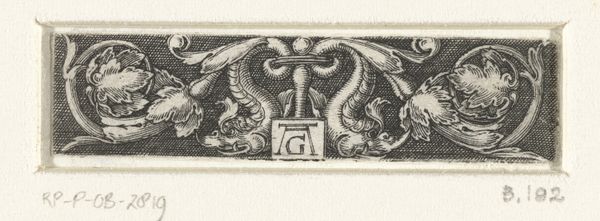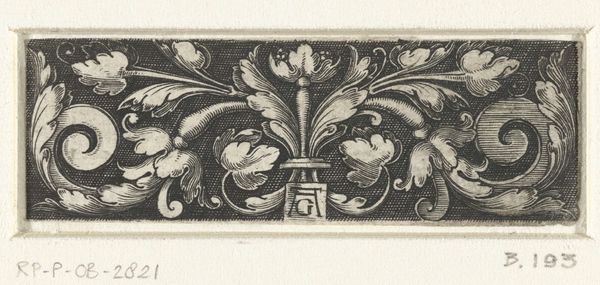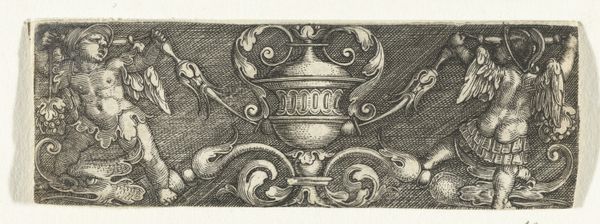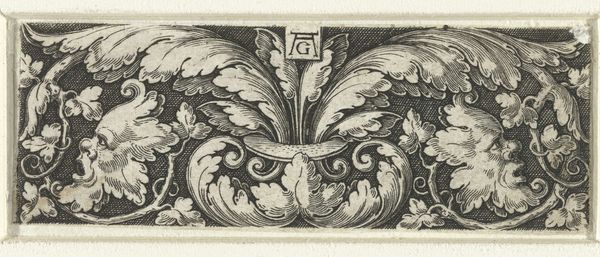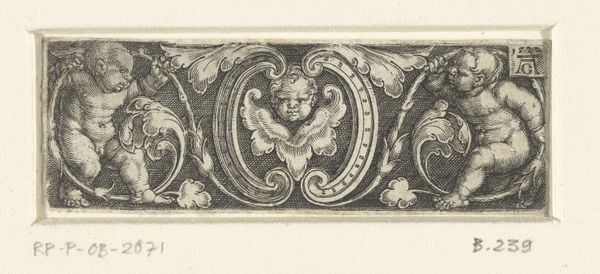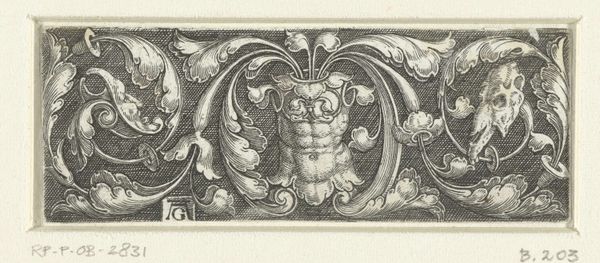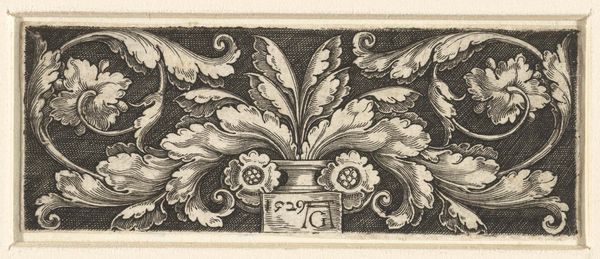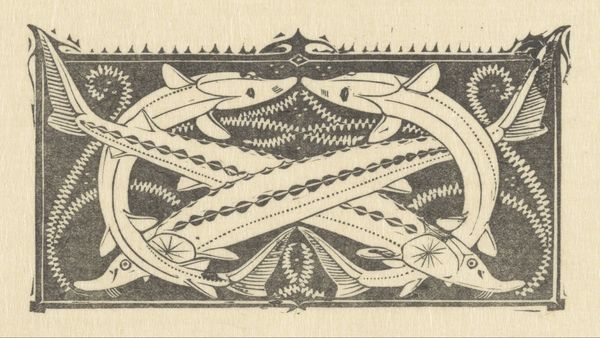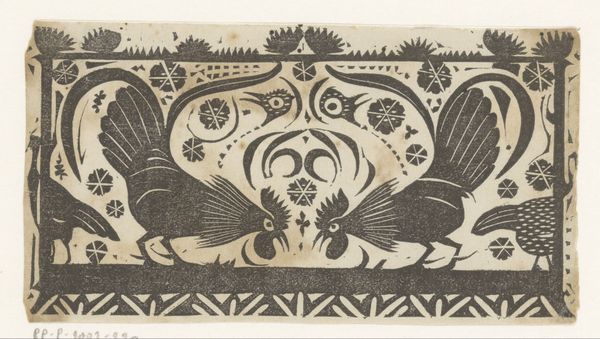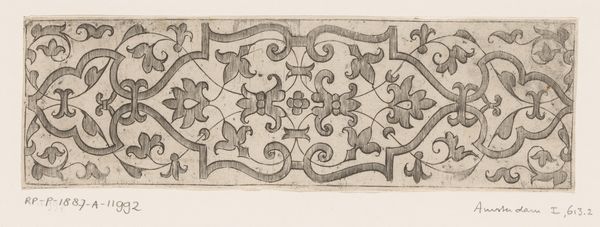
ornament, print, engraving
#
ornament
# print
#
11_renaissance
#
geometric
#
line
#
northern-renaissance
#
engraving
Dimensions: height 26 mm, width 75 mm
Copyright: Rijks Museum: Open Domain
Curator: Here we have "Ornament with a Vase and Foliage," a delicate engraving by Heinrich Aldegrever, dating back to 1528. The artwork, rendered in stark lines, captures a symmetrical composition anchored by a vase, flanked by swirling acanthus leaves. Editor: It has this incredibly balanced, almost somber presence. Despite being ornamental, the rigid symmetry and contrast evoke a controlled, contemplative mood for me. Curator: Indeed, Aldegrever, a prominent figure of the German Renaissance, excelled in intricate designs intended for goldsmiths and other artisans. This particular piece reflects the Northern Renaissance interest in classical forms adapted to suit contemporary tastes and craft traditions. The vase, the geometric inscription, and the stylized foliage are meticulously arranged according to design principles echoing ancient Rome. Editor: Right, and in 16th century Germany, artistic and religious upheavals were happening with the Reformation. These intricate works might seem detached but represent the rise of humanism within religious and political upheaval. Ornamentation and design held real ideological weight, defining spaces of both wealth and religion in the midst of this transformation. Curator: Precisely. We can analyse this particular piece through its structure and lines. Notice the engraver's skill in depicting depth using hatching and cross-hatching? Each line contributes to the overall form and the way light is expressed on the surface of the leaves. Editor: And I find it equally intriguing to consider that this kind of ornamental design becomes more readily available in homes with the rise of the merchant class in Germany during that time. The ornamental aesthetic serves as both beautiful and functional; to enhance status and celebrate craftsmanship while reflecting shifts in societal and cultural expression. Curator: That contextual understanding allows for multiple readings of a small engraving like this. Editor: Exactly, which adds layers of meaning to our viewing experience. Thanks to the rich visual language present here and in Northern Renaissance artwork in general, we recognize a deep intertwining between aesthetic value, religious tension, and rising consumerism. Curator: Indeed, from the linear exactness to how design itself was becoming a tool, it all enriches this single print far beyond surface beauty.
Comments
No comments
Be the first to comment and join the conversation on the ultimate creative platform.

